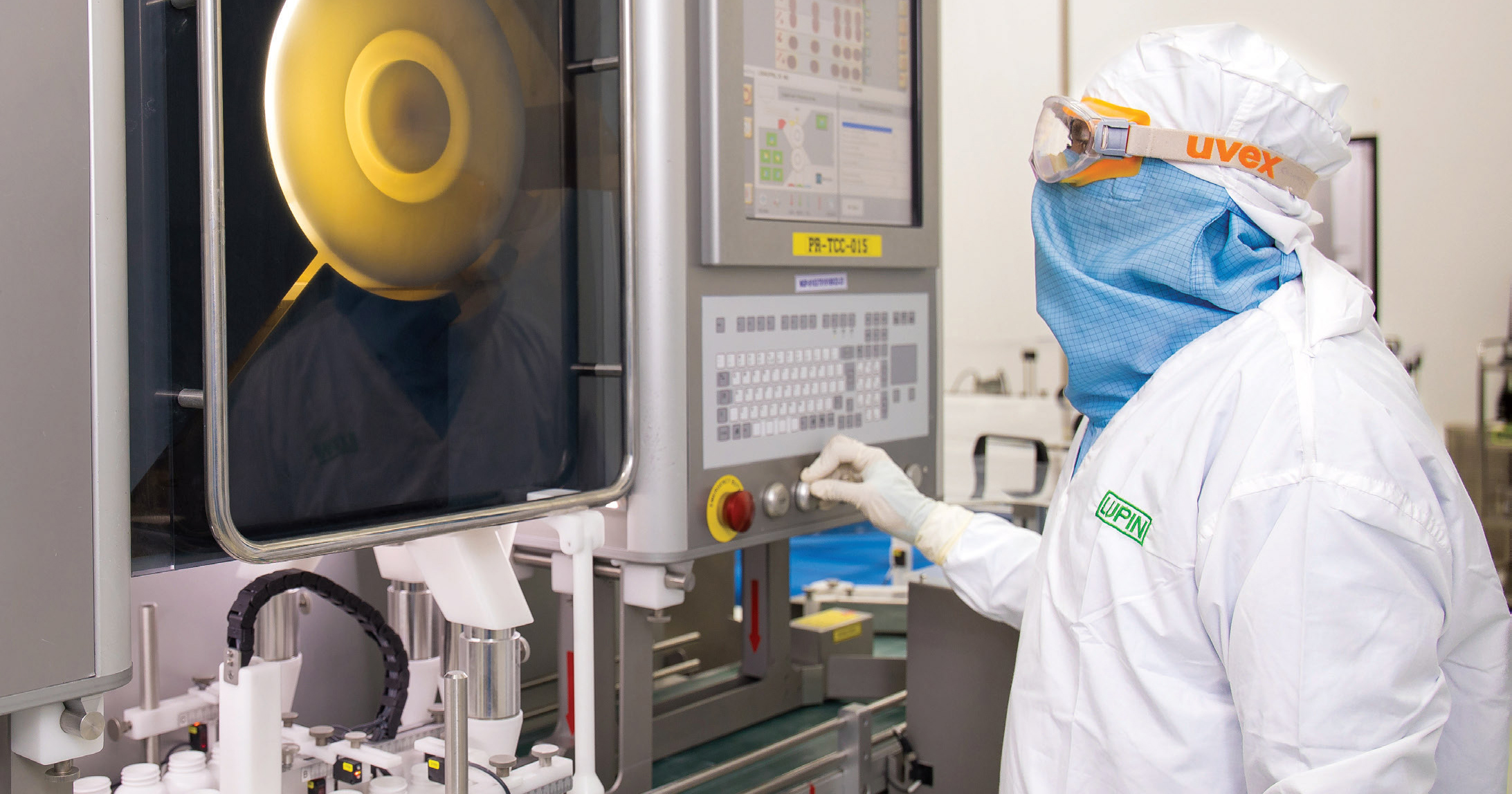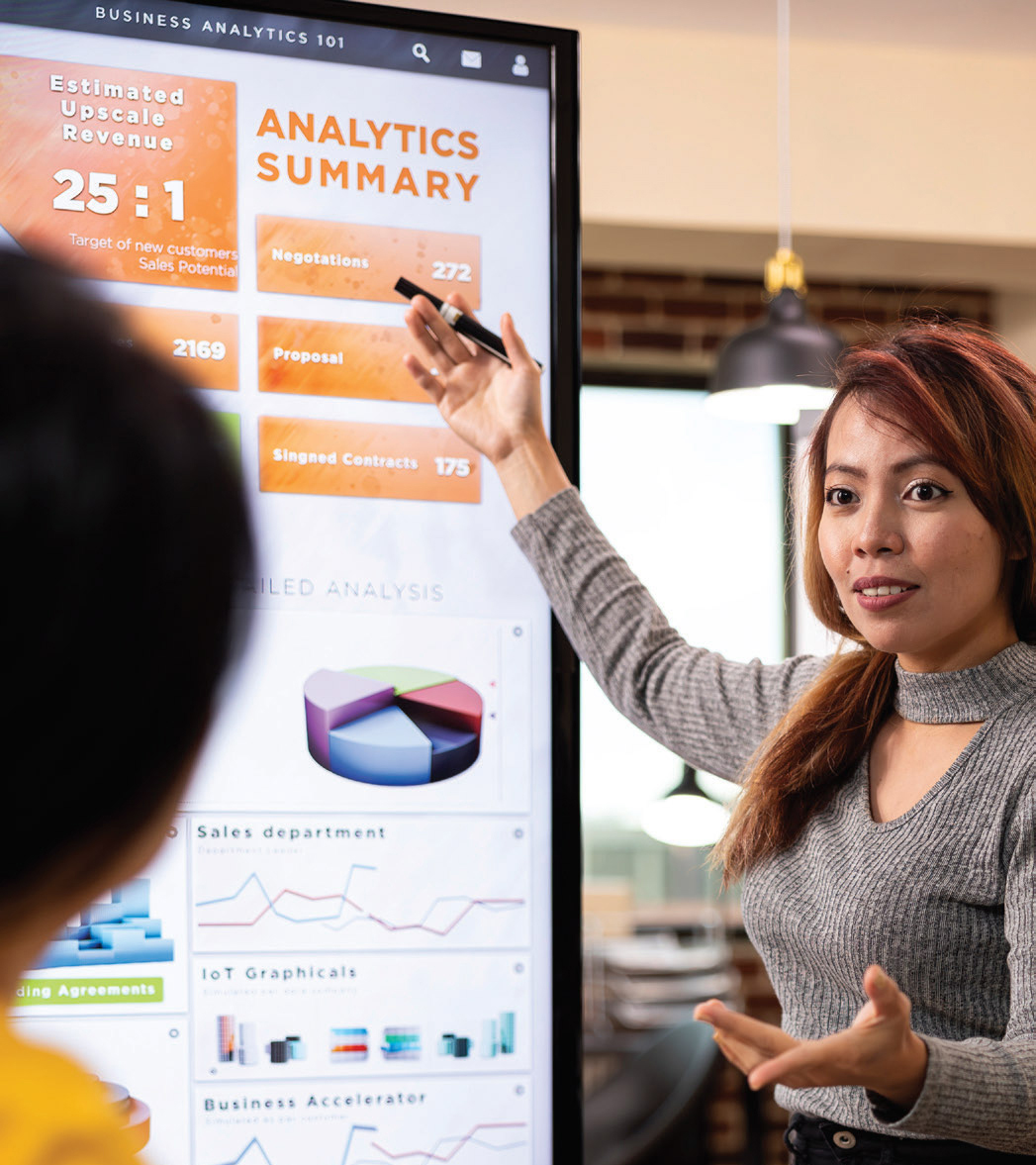Innovation to catalyze a brighter tomorrow
Behind every formulation and API product coming from our manufacturing sites lies the force of our intellectual capital. It is a culmination of our innovative efforts, scientific expertise, and commitment to create larger patient impact, all working towards our purpose of catalyzing treatments that transform hope into healing. Our intellectual capital enables us to stay ahead of the market, respond to unmet medical needs, and develop affordable treatments that make a difference. Whether it’s decoding complex problems, optimizing delivery systems, or exploring new therapies, our intellectual capital is the engine that powers progress, sustainably and responsibly.
In FY25, our teams worked assiduously to develop and acquire bestin- class medications, all while upholding the highest international standards of quality, safety, and compliance. Lupin’s intellectual capital is the engine that transforms science into solutions, and ideas into impact.

INR 17,672 Mn
R&D Investments in FY25
480
Cumulative Patents
713
Cumulative Filings
550
Cumulative Approvals
Material Topics
and Protection
Product Labeling
Counterfeit Medicines
Research and Development
Innovation at Lupin is guided by a singular vision: to deliver advanced, accessible, and impactful healthcare solutions that alleviate disease burden globally. Our investments in R&D are a direct reflection of this vision — enabling the development of differentiated, high-quality medicines that improve patient outcomes and support sustainable healthcare systems.
Our R&D ecosystem comprises of seven research centers, each focused on addressing complex scientific challenges. These centers remain pivotal to our ability to bring relevant treatments to market while upholding the highest standards of quality and regulatory compliance.
Our R&D team comprises of 1400+ members who bring deep industry knowledge and drive the journey from hope to healing. This financial year, the team has been behind the publication of 9 research papers on projects conducted at our research facilities, underscoring our commitment to continued development and innovation.
We invested INR 17,672 Mn in R&D in FY25, accounting for 8.0% of our annual revenues. This sustained investment reflects our long-term commitment to developing a robust and future-ready portfolio.
Through disciplined execution, quality-driven development, and strategic investment, Lupin continues to strengthen its innovation engine to deliver value to patients, healthcare systems, and stakeholders worldwide.
R&D Strategy
We have thoughtfully evolved our R&D strategy over the years, to align with our portfolio strategy. We tread tirelessly to be recognized as a frontrunner in the industry, in the APIs and complex generics space. We are committed to advancing our expertise in the Inhalation, Injectable, Ophthalmic and Oral segments across all key markets including the U.S., India, Europe, Canada, Australia, and Global Institutional Businesses. We continue to boost our market research divisions to identify gaps in the market and bring filings forth for pressing needs in diseaseburdened nations.
Our Product Portfolio
Based on our portfolio strategy, we continue to move towards more complex products, strengthening our product portfolio across current and new markets. In FY25, we filed 41 products and received 52 approvals, continuing to move our portfolio from strength to strength.
FY25 Highlights
| Type of Filing | Filings in FY25 | Approvals in FY25 | Cumulative Filings | Cumulative Approvals |
|---|---|---|---|---|
| NDA | 1 | 0 | 12 | 11 |
| ANDA | 14 | 29 | 441 | 339 |
| ANDSs (Canada) | 8 | 0 | 28 | 13 |
| MAAs (Europe) | 2 | 3 | 51 | 45 |
| MAAs (AU/NZ) | 2 | 5 | 56 | 54 |
| MAAs (GIB) | 2 | 5 | 27 | 21 |
| MAAs (Brazil) | 0 | 0 | 7 | 6 |
| MAAs (South Africa) | 6 | 3 | 53 | 38 |
| MAAs (Mexico) | 1 | 5 | 10 | 6 |
| MAAs (Philippines) | 5 | 2 | 27 | 17 |
| MAAs (China) | 0 | 0 | 1 | 0 |
| Total | 41 | 52 | 713 | 550 |
Intellectual Property Governance
Safeguarding our intellectual property is priority for us; hence, intellectual property management and protection lie at the heart of everything we do. By establishing clear policies, implementing strong procedures, and ensuring robust governance and oversight, we protect our assets from information breaches and mitigate the risks of infringements. Our Code of Conduct for Business Ethics includes stringent clauses on IP protection and data privacy, ensuring company data does not leave our walls and operational devices.
Our Patents
We have a diverse and constantly evolving product portfolio that has seen the addition of multiple generic dossiers across the U.S., Canada, Europe, Australia, Philippines, India, and our Global Institutional Business. Our Intellectual Property Management Group leads safeguarding our intellectual property, protecting our innovations and research while strengthening our portfolio of patents, products, and pipeline.
Our portfolio of filings now stands at 480 active patents and a total of 848 patent applications, comprising of APIs, formulations, novel chemical entities, and biologics. These patents represent our mission to bring the best-in-class medicines to our patients.
We remain committed to enabling equitable access to life-saving treatments in underserved regions. Aligned to this mission, we have adopted a policy of not patenting or enforcing existing patents, on any intellectual property related to products, addressing diseases listed under the Access to Medicine Index (ATMI) 2021. This applies specifically to least-developed, low-income, and lower-middleincome countries. Through this approach, we aim to remove barriers to access and ensure that essential medicines reach the patients who need them most.
Biosimilar Research
We continued to strengthen our biosimilar research and development capabilities in FY25, as part of our effort to expanding affordable care. Our biosimilar programs are designed to meet the growing needs of patients across geographies, including the U.S., Europe, Japan, India, and several emerging markets. We are guided by stringent regulatory and quality benchmarks to ensure the highest levels of efficacy, safety, and reliability.
During the year, we advanced commercialization agreements in the U.S., Canada, Korea, Vietnam, Indonesia, and India. We also made progress in our pipeline by submitting a marketing authorization application for our Ranibizumab biosimilar to the European Medicines Agency (EMA), further expanding our presence in ophthalmology. Additionally, we initiated two new global biosimilar programs that achieved critical milestones such as successful cloning, process development, and toxicology studies.
Our infrastructure investments in FY25 also bore fruit, with Lupin receiving EU-GMP certifications for both our 4x2KL mammalian facility in Pune and our filling plant in Mihan. These certifications significantly enhance our capacity and readiness to supply high-quality biosimilars across global markets. Meanwhile, our Etanercept biosimilar, developed in collaboration with our partners, was launched across several strategic markets— including Canada, Spain, Portugal, Slovakia, Czech Republic, Romania, and Saudi Arabia.
Together, these developments represent our continued commitment to advancing global access to biologics through high-quality, affordable biosimilars—delivering on our purpose to transform hope into healing.
New Chemical Entities
Despite significant progress in global healthcare, the world continues to face diseases without cures and conditions that require more effective therapies. This provides us the opportunity to drive scientific breakthroughs that translate into meaningful patient outcomes.
Our New Chemical Entity team plays a pivotal role in this endeavor. With a strategic focus on oncology, immunology, and metabolic disorders, the team is committed to advancing novel therapeutics from early-stage research to clinical development and eventual commercialization. In FY25, we made significant progress across all three focus areas.
As we look ahead, our focus remains resolute — delivering breakthrough medicines that offer renewed hope to patients worldwide. We believe few achievements are as impactful as transforming what was once incurable into a story of recovery.
Leveraging Technology for Innovation
At Lupin, we recognize that the future of healthcare is as much about data as it is about the science of healing. As we move forward in our pursuit of catalyzing treatments that transform hope into healing, we are embracing advanced technologies to fundamentally reshape how we discover, develop, and deliver medicines. Our digital and data-led transformation is not only improving operational agility but also enabling innovation at scale — accelerating our ability to meet evolving patient needs across the world.
Revolutionizing Drug Discovery
The impact of technology at Lupin goes well beyond operations, it is revolutionizing how we innovate. We have partnered with a leading AI solutions provider to unlock insights from complex datasets and bring precision to our drug discovery process. By evaluating diverse variables, including drug class, mechanism of action, indications, routes, and clinical probability of success, these AI models equip our Global Business Development and Licensing teams with powerful intelligence.
This capability has been especially transformative in our work across inhalation therapies and central nervous system treatments, among others. AI enables our scientists and evaluators to make faster, more informed decisions, identify high-potential assets early, and optimize development timelines, reducing the risk of failure and increasing the probability of clinical and commercial success.
As we scale our digital investments, we remain guided by a singular vision — to transform healthcare delivery through innovation, while staying rooted in patient-centricity and purpose. Technology is a multiplier of our ability to heal, serve, and deliver a wider impact. At Lupin, we are building this digital future with intent, insight, and integrity.
R&D Partnerships and Collaborations
We believe that knowledge thrives in collaboration. In a rapidly evolving healthcare ecosystem, our partnerships are catalysts that help us achieve our purpose. Our commitment to open innovation, a model that embraces external collaboration to accelerate discovery, scale impact, and address unmet medical needs, continues to shape our R&D strategy. Through this approach, we tap into breakthrough science, advanced technologies, and new market opportunities, while reinforcing our ESG commitments and global competitiveness.
Advancing Treatment for Highly Drug-Resistant Tuberculosis
A significant milestone in our partnership-driven innovation journey is our collaboration with the TB Alliance. Lupin was granted a non-exclusive license to manufacture and commercialize Pretomanid, a key component of the three-drug “BPaL” regimen for drug-resistant tuberculosis. This partnership has enabled us to initiate supply in over 140 countries and territories — including the most TB-affected geographies globally.
Innovation at Lupin is driven by purpose, guided by science, and grounded in impact. Our intellectual capital is not just a differentiator, but a catalyst for patient-centric progress.
Dr. Shahin Fesharaki, Chief Scientific Officer
Pretomanid, an oral tablet and a novel nitroimidazooxazine compound, represents a new class of anti-TB treatments, offering a vital solution to combat increasing resistance to conventional therapies. Clinically evaluated in over 1,100 patients across 19 trials in 14 countries, Pretomanid has demonstrated significant safety and efficacy. To date, over 4,000 treatment courses have been procured across 40 countries, reinforcing our role in transforming TB outcomes through global access and innovation.
Enabling Sustainable Respiratory Care Through Next-Generation Inhalers
Sustainability and patient care converge in our strategic partnership with Honeywell. In FY25, Lupin became the first pharmaceutical company in India to adopt Solstice® Air (HFO-1234ze cGMP), a next-generation, near-zero global warming potential (GWP) propellant, in our development of pressurized metered-dose inhalers (pMDIs) for asthma and chronic obstructive pulmonary disease (COPD).
These next-generation inhalers aim to dramatically reduce greenhouse gas emissions by up to 99.9% compared to traditional hydrofluorocarbon (HFC)-based propellants. This collaboration underscores our dual commitment: advancing best-in-class respiratory therapies and contributing to climate action goals. By integrating Honeywell’s innovative, non-flammable propellant into our respiratory pipeline, we are redefining the future of sustainable respiratory care.
These partnerships exemplify how strategic alliances fuel our innovation engine. Whether through scaling access to life-saving TB medicines or pioneering greener inhalation technologies, our collaborations amplify impact and expand reach. In the years ahead, we will continue to invest in open innovation models and cross-sector partnerships to accelerate the delivery of transformative healthcare solutions at scale.

Research Accessibility and Transparency
Research at Lupin hinges on the principles of transparency and sharing relevant information. We are committed to sharing clinical trial research outcomes, post-launch study outcomes, anonymized patient data, demographic breakdown of clinical research participants, cost-effectiveness data, and health economic output data, with stakeholders, researchers, clinical research participants, payors, regulators, healthcare professionals, and patient advocacy groups. We consistently conduct post-launch observational studies to gather patient-level clinical research data, emphasizing safety and effectiveness. These studies are regularly published on our website and clinical research registries, such as clinicaltrials.gov.
We are committed to sharing this data with researchers and stakeholders, as we believe it will advance scientific research and ultimately enhance access to healthcare.
Fortifying Digital Trust and Operational Resilience
Information Security, Data Protection, and Smart Technologies
In an increasingly AI-driven and hyper-connected world, cybersecurity is not just an IT imperative — it’s a business differentiator. At Lupin, we view information security as foundational to stakeholder trust and long-term resilience.
In FY25, we significantly strengthened our Information Security Management System (ISMS), aligning with the revised ISO 27001:2022 standard across all manufacturing, R&D, and corporate sites. We adopted a Zero Trust architecture, implemented real-time threat monitoring, and embedded CERT-IN-compliant protocols, reinforcing our commitment to global standards.
Key Achievements
- Zero major cybersecurity incidents reported in FY25.
- Seamless transition to ISO 27001:2022.
- Enhanced internal governance through board-level oversight and executive accountability.
- Adoption of context-based risk frameworks and predictive threat detection tools.
Proactive Protection, Measurable Vigilance
Our layered security strategy includes:
- Bi-annual Vulnerability Assessments of internal infrastructure.
- Annual Third-Party Penetration Testing simulating real-world cyber threats.
- Risk assessments aligned with ISO 27001 and ISO 31000 standards to preempt emerging threats.

Empowering Our People
We believe cybersecurity is a shared responsibility.
- 100% employee completion of KAVACH information security training.
- 81.5% participation in ongoing security awareness programs via LMS.
- Introduction of quarterly phishing simulations, expanding in FY26.
- Conduction of internal and external audits by professionals to ensure cybersecurity.
Our cybersecurity governance structure stems from our Board of Directors, who provide constant counsel through the Risk Management Committee. Our Global CFO is the foremost authority on the Risk Management Committee. This chain of responsibility is continued by our Global Chief Information Officer, who reviews and implements SOPs, policies, and ensures compliance.
Digital Efficiency Through Smart Technologies
Our investment in enterprise analytics and automation delivered measurable impact:
INR 400 Mn in cost savings and 12,000 man-days reclaimed in FY25. Enhancements across:
- Supply Chain (Control Tower, demand-supply planning)
- Finance (FSSC and sales return automation)
- Manufacturing (machine settings optimization)
- Quality (HPLC and utility efficiency)
Case Study
AI-Led Transformation
Lupin has established a Generative AI initiative to spearhead innovation and drive efficiency across critical business functions. This strategic initiative positions GenAI as the cornerstone of the company’s AI roadmap, enabling the development, implementation, and scaling of transformative AI solutions throughout the organization. Through this initiative, Lupin has successfully integrated AI into key areas of the pharmaceutical value chain, delivering tangible results:
- Marketing and Sales: Enhanced the productivity of medical representatives by deploying an intelligent digital assistant.
- Supply Chain: Introduced AI-powered tools to generate actionable insights from market demand and supply dynamics.
- Quality: Streamlined investigative processes, improved decision-making, and facilitated intelligent document creation and summarization using AI technology.
- Manufacturing: Empowered manufacturing and maintenance operations with on-demand AI-driven responses to operational queries.
This forward-thinking approach underscores Lupin’s commitment to leveraging cutting-edge technology to propel its business and the pharmaceutical industry toward a more efficient and innovative future.
Strategic Digital Transformation Driving Operational Excellence
This year, we accelerated our digital transformation through a structured, data-first approach focused on enhancing agility, resilience, and enterprise performance. At the core of this effort is the global deployment of SAP S/4HANA®—a next-generation platform unifying real-time data across our supply chain, sales, manufacturing, and workforce operations. Spanning 100+ countries and 15 major sites across India, the U.S., Brazil, and Mexico, the system now serves as a single source of truth— enabling informed decisions and proactive interventions at scale.
To enhance user experience and frontline productivity, we rolled out SAP Fiori applications with simplified dashboards and intuitive workflows. Complementing this, Qlik Sense was embedded across core functions, democratizing data and embedding real-time analytics into daily decision-making. We also scaled Robotic Process Automation (RPA), particularly in finance and compliance functions, to drive accuracy, speed, and cost efficiency.
A major milestone in this journey was the global launch of an integrated supply planning platform—seamlessly linked to our ERP—which has transformed demand and supply planning. By improving forecast accuracy and cross-functional coordination, this innovation is reshaping healthcare logistics and ensuring timely, efficient delivery of medicines worldwide.


Privacy and Customer Protection
Privacy Policy
Lupin’s ISMS policy includes a comprehensive privacy policy that is applicable to its entire operations as well as partners, suppliers, and joint ventures. The IT team is tasked with addressing all privacy-related grievances for internal and external stakeholders. Additionally, our dedicated Kavach team specifically handles privacy concerns pertaining to employees.
The privacy policy implementation, actions procedures are embedded in Lupin’s corporate risk management and managed by the IT team. Risk mitigation strategies are implemented to ensure that customer and employee data is not exposed to external threats. In case of any breach of data privacy, we have a clearly defined escalation process with disciplinary actions, outlined in the ISMS policy document, to ensure speedy resolution. As part of continuous improvement, we conduct annual internal and external audits on data privacy compliance.
Customer Privacy and Safety
Lupin is committed to maintain the privacy and security of all personal information in accordance with Regulation 2016/679 (the “General Data Protection Regulation” or “GDPR”, interchangeably) and any other relevant privacy legislations in the countries where we operate. Our Privacy Policy outlines how Lupin, along with its affiliates and subsidiaries collects, holds, uses, processes, and disposes of information about individuals, including employees, customers, suppliers, patients, and Health Care Professionals (HCPs) in accordance with applicable privacy laws and regulations.
The collection and use of personal information vary based on the category of the data subject and depend on the nature and circumstances of the processing.
Stakeholders, including customers and consumers, are informed about the nature of the information collected, as well as its intended purpose and usage, after they have provided their consent.
We demonstrate and ensure complete transparency, providing flexibility for customers and stakeholders to decide when to opt-out of having their data stored. Customers have the right to update personal data, request access or erasure of personal data from Lupin records, restrict processing, and object to data processing. Additionally, they may request that we transfer the data provided to us to another organization.
Resilience Through Business Continuity
We have established a Business Continuity Management in alignment with internationally recognized standard for Business Continuity Management Systems (BCMS). This process commenced with a Business Impact Analysis and a tabletop recovery exercise at our Head Office.
In subsequent phases, this will extend to R&D and manufacturing locations to ensure operational continuity during any crisis. The BCP covers all our manufacturing sites, research parks, and corporate offices.
Way Forward
We remain sharply attuned to the ever-evolving landscape of global healthcare, responding with agility, foresight, and innovation. Our focus will continue to remain on expanding our portfolio to address unmet medical needs through advanced biosimilar research and novel drug development, ensuring that complex therapies become more accessible and affordable across both mature and emerging markets.
As we scale scientific boundaries, we also recognize that innovation must be matched with responsibility. In an increasingly interconnected, AI-powered world, the integrity of data is foundational to the trust we build. That is why we continue to strengthen our data security architecture, investing in advanced protection technologies and governance frameworks to safeguard the interests of all our stakeholders.
By aligning scientific innovation with sustainability and digital resilience, Lupin is poised to lead with purpose — delivering impactful healthcare solutions while securing the trust and well-being of patients, partners, and communities across the globe.


 Assurance Statement
Assurance Statement